Ptilosarcus gurneyi (Gray, 1860)Common name(s): Orange sea pen, fleshy sea pen, sea feather |
|
| Synonyms:
Ptilosarcus quadrangulare Leioptilus quadrangulare Leioptilus guerneyi Ptilosarcus quadrangularis |
 |
| Phylum Cnidaria
Class Anthozoa Subclass Alcyonaria (Octocorallia) Order Pennatulacea Suborder Subselliflorae Family Pennatulidae |
|
| (Ptilosarcus gurneyi from Rosario Bay. Approximate length 25 cm) | |
| (Photo by: Dave Cowles August 2004) | |
How to Distinguish from Similar Species: There are no similar species near Rosario.
Geographical Range: Gulf of Alaska to southern California
Depth Range: Shallow subtidal to 70 m
Habitat: Sand and mud bottoms
Biology/Natural
History:
The entire central
part (rachis) is said to be one large polyp. Smaller,
inconspicuous
polyps open into it and pump water in an out as needed for expansion or
contraction. Produces a strong greenish luminescence when
disturbed.
Preyed upon by several nudibranchs, including Hermissenda
crassicornis, Armina californica,
and Tritonia festiva,
and
of the seastars Dermasterias imbricata, Pycnopodia
helianthoides, Mediaster
aequalis, Hippasteria phrygiana, and Crossaster papposus. The
sea pens may rapidly
burrow into the sediment when contacted by a predator.
Although they
do not appear to burrow when exposed only to seawater which contained a
predatory seastar, they were more likely to burrow after contacting a
predatory
seastar if they had already been exposed to its smell. This
species
responds to different predators differently.
| Return to: | |||
| Main Page | Alphabetic Index | Systematic Index | Glossary |
References:
Dichotomous Keys:Kozloff 1987, 1996
Flora and Fairbanks, 1966
General References:
Gotshall
and Laurent, 1979
Kozloff,
1993
Scientific
Articles:
Weightman, Janice O. and David J. Arsenault,
2002.
Predator classification by the sea pen Ptilosarcus gurneyi (Cnidaria):
role of waterborne chemical cues and physical contact with predatory
sea
stars. Can. J. Zool./Rev. Can. Zool. 80(1): pp. 185-190
Williams, Jason D., Bianca Anchaluisa, Christopher B. Boyko, and Neil McDaniel, 2018. Description of a new endoparasitic copepod genus and species (Lamippidae) that induces gall formation in leaves of the sea pen Ptilosarcus gurneyi (Octocorallia) from British Columbia. Marine Biodiversity 48:3 pp. 1325-1335
General Notes and Observations: Locations, abundances, unusual behaviors:
In our experience this species is usually found in quieter water such as behind Whidbey Island. Years ago there was a small colony in Rosario bay. The colony disappeared and no individuals were seen for 5-10 years. In the 1980's some students working on a project harvested some individuals from behind Whidbey Island. After the project they returned them to Rosario Bay. Since that time the species has been becoming more abundant in the bay again.
In my experience, if this species is not placed into sand or mud in the aquarium, it usually has a problem with its lower stalk which becomes hyperinflated.
A short video of this species can be found at: http://www.racerocks.com/racerock/archives/vidseapen2a.htm
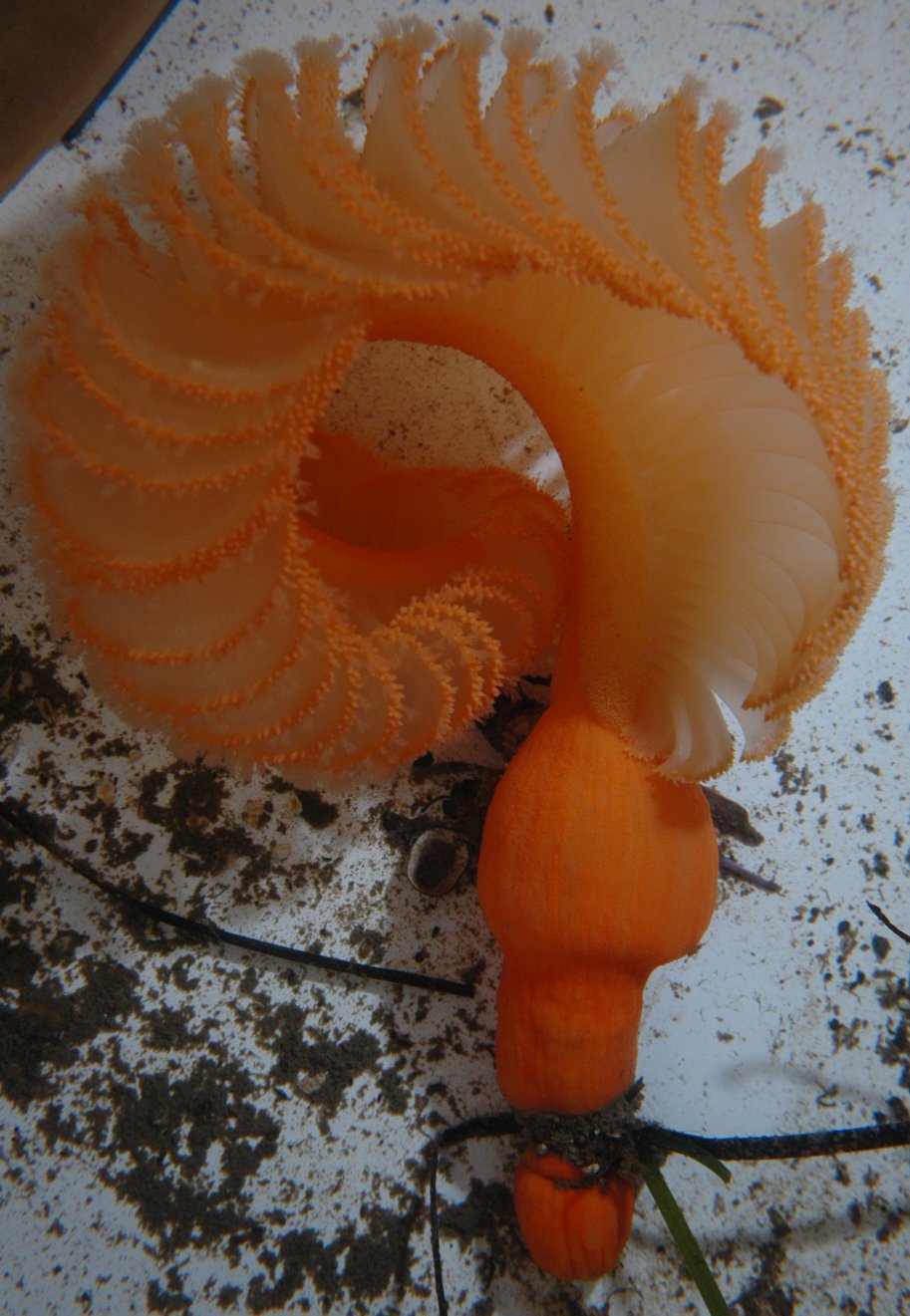
Another photo. Note that the polyps are arranged in flaplike
rows on the plume. Photo by Dave Cowles, July 2005
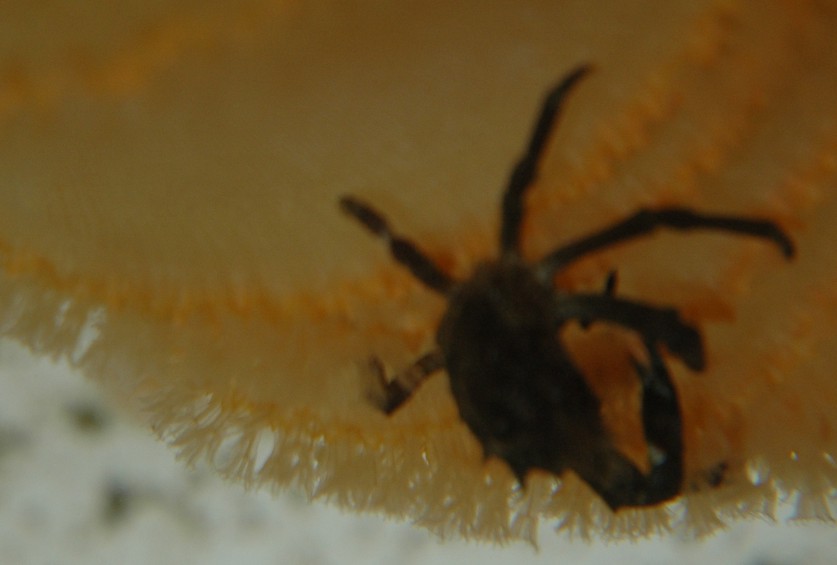
This closeup shows the individual polyps lining the rows. A
small
majid crab has climbed aboard, and may be nipping at the polyps, though
the crab's activity did not stimulate Ptilosarcus
to close.
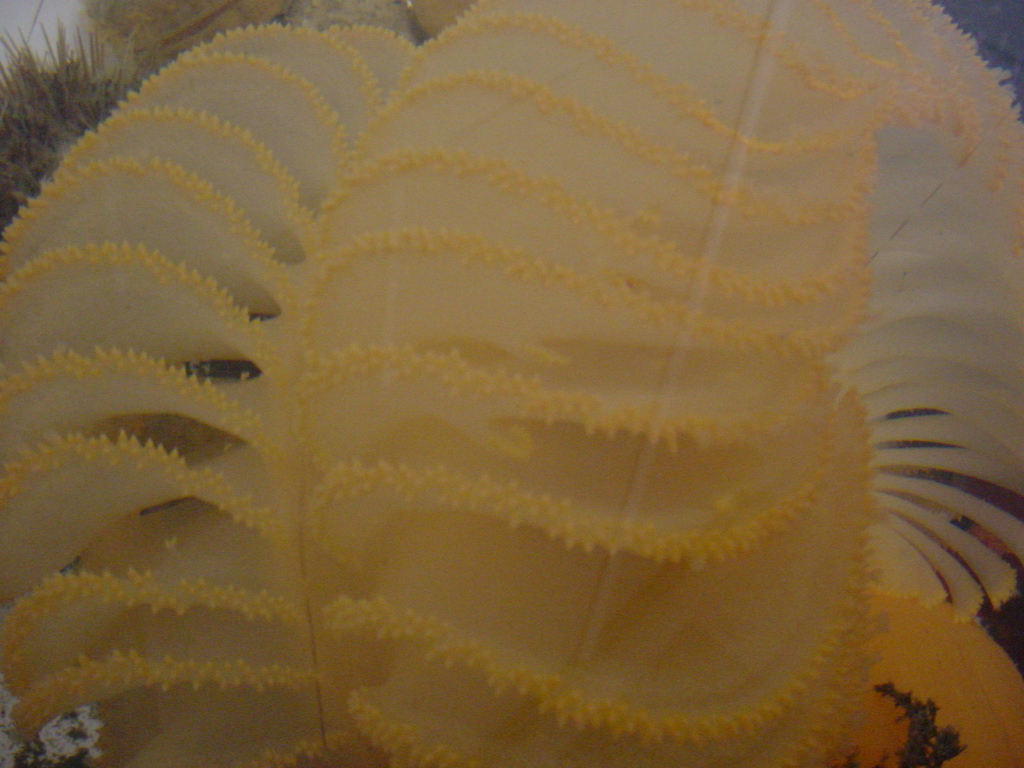
Buds seem to be growing off 3 of the laminae on the right side of the
plume of this individual. Does Ptilosarcus
do any budding
for reproduction?
Photo by Dave Cowles, July 2005
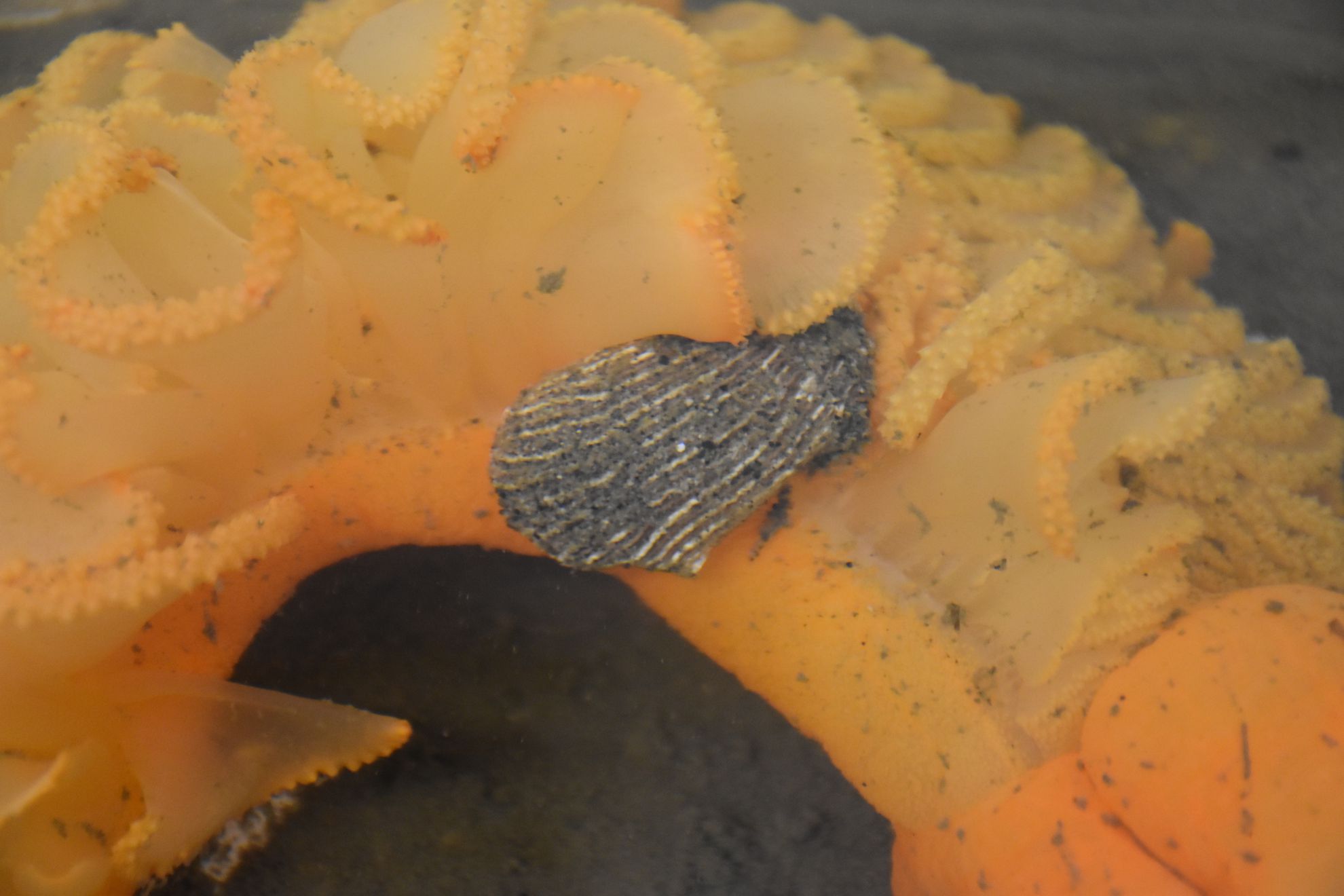
This Ptilosarcus is being fed on by the nudibranch Armina californica. Below is a view of a Ptilosarcus after active feeding by Armina. The shaft is the rachis.
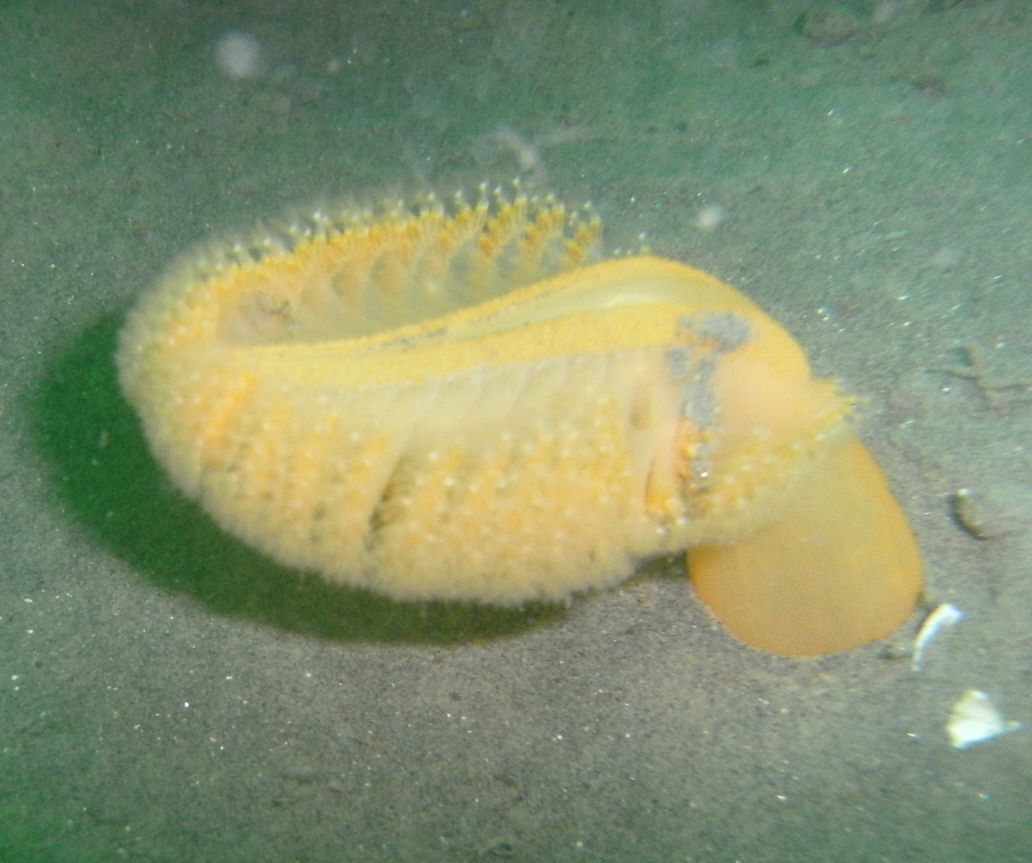
I photographed this individual at 50 ft depth in Burrows Bay. Photo by Dave Cowles 2019
Authors and Editors of Page:
Dave Cowles (2005): Created original page